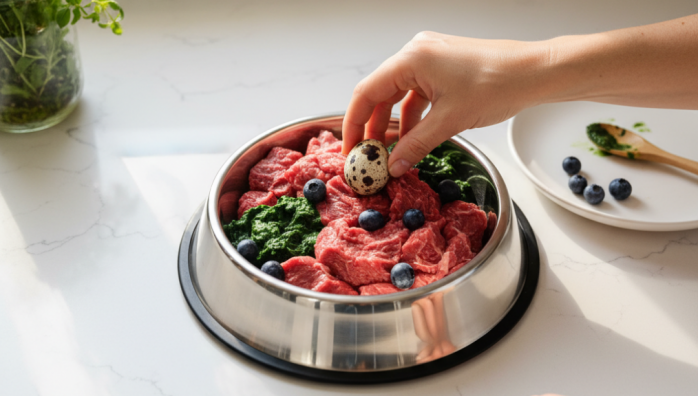Safe Ingredient Selection for BARF Diets
by admin in Pet Care Basics 13 - Last Update November 23, 2025

When I first decided to transition my dog to a Biologically Appropriate Raw Food (BARF) diet, I felt a mix of excitement and pure terror. The internet was a minefield of conflicting advice, and the fear of doing something wrong was very real. My biggest hurdle? Simply knowing which ingredients were safe and which were a hard no. It took a lot of research, conversations with my vet, and some careful trial and error to build my confidence. I want to share the foundational principles I learned for selecting ingredients, hoping it makes your journey a little less daunting than mine was.
The foundation: building a balanced bowl
I learned early on that a BARF diet isn\'t just about throwing some raw meat in a bowl. It’s about mimicking a natural, ancestral diet. For me, that means focusing on a core ratio to ensure my dog gets a complete nutritional profile. While specific percentages can vary, I\'ve found a great starting point is to think in terms of muscle meat, raw meaty bones, and organ meats.
Choosing quality muscle meat
This is the cornerstone of the meal, typically making up the largest portion. I aim for variety to provide a broad range of amino acids. One week it might be beef, the next chicken, then perhaps turkey or lamb. I look for lean cuts when possible and always source from places I trust. Remember, this is the main protein source, so quality is something I never compromise on.
The critical role of raw meaty bones (RMBs)
Honestly, this part scared me the most at first. Cooked bones are a definite danger, but raw, edible bones are a vital source of calcium, phosphorus, and other minerals. My rule of thumb is to use non-weight-bearing bones from smaller animals. Think chicken wings, duck necks, or turkey necks. They provide an incredible dental workout, too! I always supervise bone-chewing time, and it\'s a practice I strongly recommend you discuss with your vet to ensure you\'re choosing the right size and type for your specific pet.
Organ meats: nutrient-dense but in moderation
Organs are like nature\'s multivitamins, packed with essential nutrients. I made the mistake of adding too much liver at first, which resulted in some digestive upset. A lesson learned! Now, I stick to a small percentage of the overall meal, with liver making up about half of that, and the other half being other secreting organs like kidney, spleen, or pancreas. A little goes a very long way here.
Fruits, vegetables, and supplements I use
While not strictly necessary for every model of raw feeding, I like to add a small amount of finely puréed, pet-safe vegetables and fruits for added fiber and antioxidants. Think dark leafy greens like kale, or dog-safe berries like blueberries. I also include a good quality fish oil for omega-3 fatty acids, which has done wonders for my dog\'s coat. This is my personal preference, and it\'s always best to introduce new foods one at a time.
Ingredients I absolutely avoid
This list is non-negotiable for me and is crucial for your pet\'s safety. Building this list gave me so much peace of mind.
- Cooked Bones: They can splinter and cause serious internal damage. Never, ever feed them.
- Onions, Garlic, and Leeks: These are toxic to dogs and cats and can damage red blood cells.
- Grapes and Raisins: Highly toxic and can cause acute kidney failure.
- Macadamia Nuts: Can cause weakness, vomiting, and hyperthermia in dogs.
- Xylitol: An artificial sweetener found in many human foods (like peanut butter) that is extremely toxic to dogs.
Embarking on a BARF diet is a journey, not a destination. It\'s about learning, observing your pet, and making adjustments. Starting with a solid understanding of safe ingredients is the most important first step you can take. Remember, this is just my experience, and I always recommend working closely with a trusted veterinarian or a certified canine nutritionist to create a plan that\'s perfect for your beloved companion.














